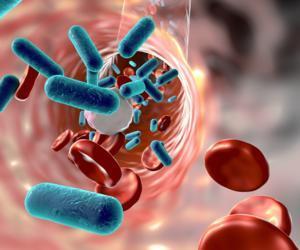How Are the Treatment Options for Leukemia Managed?

Leukemia is a group of different cancers of the blood. Unlike other types of cancers, leukemia has the unique feature of not having a detectable tumor or malignant mass, which is typical of other types of cancer. In leukemia, the cancer cells are found in the blood and bone marrow. The abnormally rapid growth and division of the cancer cells produce immature, non-functional blood cells.
What are the 4 main types of leukemia?
An important factor considered in the treatment of leukemia is the type of leukemia present. Leukemias are generally classified as acute or chronic, depending on how quickly the disease develops, and according to which type of blood cell is affected (whether lymphocytes or myelocytes). Based on these, there are four main types of leukemia:
- Acute lymphoblastic leukemia, or ALL
- Chronic lymphoblastic leukemia, or CLL
- Acute myelogenous leukemia, or AML
- Chronic myelogenous leukemia, or CML
What are the risk factors of leukemia?
Knowledge of the risk factors of leukemia is relevant in the treatment of the condition, since each risk factor influences the type of leukemia that develops:
- Exposure to certain chemicals that are commonly used in chemical industries, such as benzene, a chemical component found in gasoline. Some studies have shown that long-term and constant exposure to abnormally high levels of benzene puts a person at higher risk for acquiring acute myeloid leukemia (AML) and acute lymphocytic leukemia (ALL).
- Cigarette smoking has also been linked to the development of AML. Although smoking is usually connected to the development of lung, mouth, and throat cancer, it has also been linked to certain types of leukemia, as there are some cigarette components that penetrate the bloodstream.
- Having previously had cancer has also been found to make leukemia more likely. The presence of a previous type of cancer for which the person has undergone chemotherapy and radiation therapy puts the person at higher risk of developing leukemia.
- Certain genetic disorders, such as Down syndrome, have been associated with an increased risk of leukemia. In some types of leukemia, such as AML, ALL, and CLL (chronic lymphocytic leukemia), having a family history of leukemia, especially when it has occurred in a first degree relative (a parent or child) or a sibling, puts a person at higher risk of also developing leukemia.
What factors are considered in treating leukemia?
Other than the type of leukemia the patient has, the management of leukemia depends on certain features of the cancer cells, the stage of the condition or extent to which the cancer cells have spread to other parts, the symptoms present, the availability of the treatment options, prior treatment history, and the person's overall state of health, age, and comfort level with the available treatment options.
What are the treatment options for leukemia?
1. Chemotherapy
Chemotherapy is the most common treatment and plays a major role in the treatment of leukemia. For chemotherapy, there are several drugs that the doctor will consider depending on the patient’s condition. Chemotherapy aims to kill the cancer cells. A patient undergoing chemotherapy may have to be subjected to several sessions with possibly different drug combinations. Such drugs may be taken orally or introduced into the body intravenously. For the latter, hospitalization is required. The doctor will closely monitor the patient’s reaction to the drug therapy and determine whether the medication needs to be adjusted or replaced for the upcoming sessions. The patient’s overall health is also looked after and considered while he or she is undergoing this type of treatment.
2. Biological treatment
Another type of treatment for leukemia is biological treatment. This therapy focuses on improving the immune system for it to perform its normal functions, so that it can identify and attack unhealthy cancer cells and eventually kill them.
3. Radiation therapy
Radiation therapy uses x-rays or other high-energy beams to target specific leukemia cells, aiming to interfere with their rapid growth and division. Undergoing radiation therapy requires hospitalization. The patient lies on a table, and either radiation beams are directed at specific parts of the body previously determined to have a high level of cancer cells, or the entire body is subjected to radiation.
What is a stem cell transplant?
Stem cell transplant has been steadily growing in popularity as a means to manage certain diseases, leukemia included. This treatment aims to replace diseased bone marrow with newly-produced healthy bone marrow. A patient who is about to undergo stem cell therapy is first subjected to a high dose of chemotherapy or radiation therapy to facilitate the destruction of unhealthy bone marrow. Blood-forming stem cells are then infused into the patient’s body, allowing the formation of new, healthy bone marrow.
How is leukemia managed?
The primary goal of treatment is to destroy the abnormal growth of cells and accommodate the growth of normal cells in the bone marrow. As mentioned, treatment decisions will depend on a number of factors, the most important of them being the type of leukemia the patient has.
1. For ALL (acute lymphoblastic leukemia):
The management of ALL consists of three stages: induction, consolidation, and maintenance.
Induction:
- This stage induces remission by destroying the leukemia cells in the bone marrow and blood.
- The patient is treated in this phase by corticosteroids and chemotherapy.
- The management takes around 4 weeks, and the patient is admitted to the hospital to remain under observation.
- Exceptionally, there are certain patients with genetic Philadelphia chromosome. These individuals are treated with kinase inhibitors, as they have a prominent role in treatment of cancer and other diseases.
Consolidation:
- This therapy kills the leukemia cells that are not shown through the laboratory tests.
- These cells are capable of regrowing and causing a relapse of the condition.
- Treatments undertaken in this stage are stem cell transplant and chemotherapy.
- Certain preventive measures, like radiation and chemotherapy, are also considered for the spinal cord and the brain.
- Consolidation takes few months and doesn't require being admitted to the hospital.
Maintenance:
- This stage aims at preventing the remaining abnormal cells from regrowing.
- The dose of chemotherapy is much lower in this stage. The patient is given chemotherapy with pills and intravenous treatment once a month.
- This therapy takes much longer, up to 3 years, but shows great results in the patient. Patients get back to being active and show excellent recovery, sometimes as normal as before the treatment.
2. For AML (acute myelogenous leukemia):
Treatment for AML is based on the genetic make-up of the abnormal myeloid cells. There are usually two steps in the treatment plan: induction of remission and post-remission therapy.
Induction:
- This stage induces remission by killing the leukemia cells in the bone marrow and blood through chemotherapy given intravenously.
- The treatment lasts for a month--1 week for the chemotherapy and 3 weeks for bone marrow recovery--during which the patient stays in the hospital.
Post-remission therapy:
- This therapy involves additional chemotherapy or a stem cell transplant and aims to kill any leukemia cells that may be present even though they are not detected by tests. The doctor may also encourage the patient to join a clinical trial for a new treatment.
- If chemotherapy is chosen, the patient will need to be in the hospital for several days a month for 3 to 4 months.
3. For CLL (chronic lymphoblastic leukemia):
The two main treatment choices for CLL are radiation therapy and chemotherapy, although CLL may not always be treated right away.
Radiation therapy:
- Lymph nodes that are swollen due to an excess of abnormal lymphocytes may be treated by this therapy.
Chemotherapy:
- This will likely be a combination of medicines, and may include monoclonal antibodies, which kill cancer cells.
If CLL does not respond to treatment or comes back after a period of no symptoms, the patient may be made to undergo additional chemotherapy or a stem cell transplant, or encouraged to participate in a clinical trial for a new treatment.
4. For CML (chronic myelogenous leukemia):
Unlike CLL, CML is treated right away. The two most common treatment options are therapy with a tyrosine kinase inhibitor and stem cell transplant.
Targeted tyrosine kinase inhibitor therapy:
This is the first treatment for CML. This therapy may work for several years for patients in the early stages of CML. Such patients who do not experience a relapse may never have to undergo a stem cell transplant.
Patients who are diagnosed in the later stages of CML, however, may need chemotherapy or tyrosine kinase inhibitor therapy to increase the chances of a successful stem cell transplant.
Stem cell transplant:
Prior to a stem cell transplant, chemotherapy or radiation therapy is first used to halt the activity of cancer cells in the bone marrow.
When is leukemia considered cured, and what about relapses?
Leukemia follows the ‘5 year rule’ and is considered cured if the patient shows no signs and symptoms for at least five years. A patient who suffers a relapse is subjected to further chemotherapy, has a stem cell transplant, or might choose to participate in a clinical trial for a new treatment.










